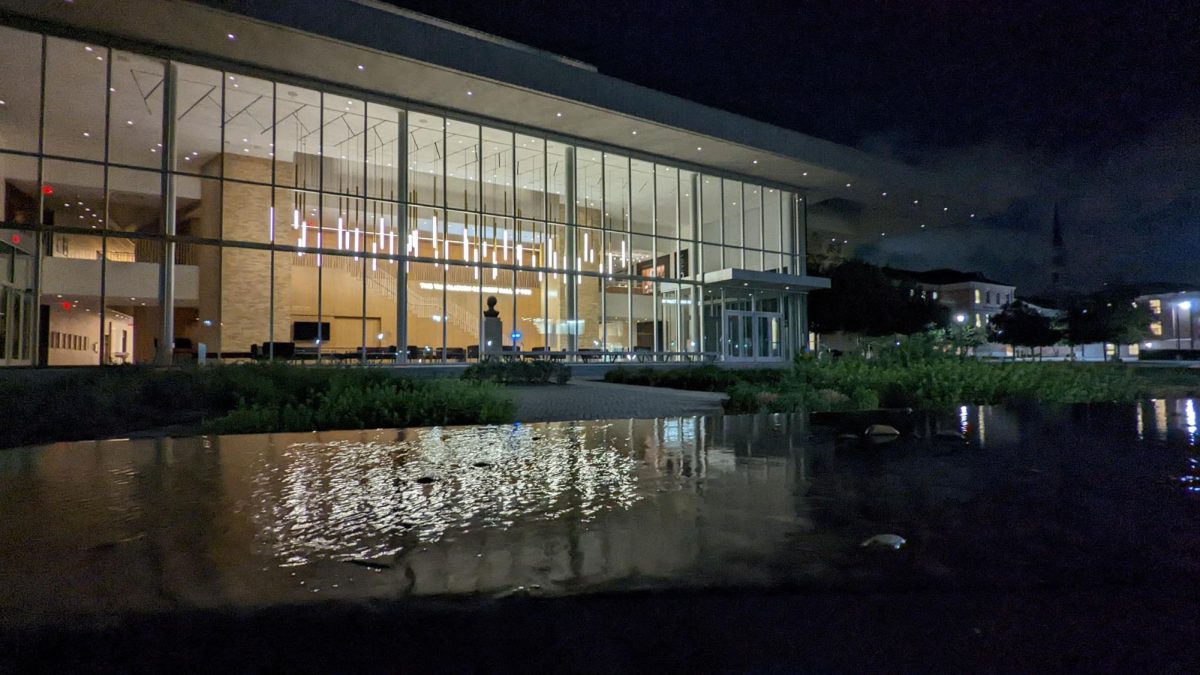Fort Worth’s drought conditions have led to some noticeable changes in the look of landscaping in the 109.
“Individuals are much more concerned finding plants for their landscaping that are drought- resistant than they were 10 years ago or even five years ago,” said Susanna Whelan, store supervisor of Calloway’s Nursery at 2651 S. Hulen St.
Whelan also said that the regulations are good for the nursery business. The Calloway’s staff has the opportunity to get costumers excited about a broader range of plants beyond traditional English garden plants that may not be most effective in saving water, she said.
Whelan suggested that during the restrictions, people who are looking for turf grasses should use southern lawn seeds because they are naturally more adaptive to the area. For instance, she said, customers should use St. Augustine or Bermuda grass seed for lawns with a lot of exposure to the sun and fescue or monkey grass for more shaded lawn areas.
Landscapes and lawns are more than capable of surviving on a watering cycle of twice a week and in some cases even less than that, Whelan said.
Individuals should follow the watering regulations and take them seriously, she said, and residents should comply with the restrictions — if not for global water concerns, at least for their own water bill.
Since the watering restrictions have been implemented, there have been a variety of changes brought to the look and maintenance of certain local landscapes.
The TCU Wesley Foundation, at 2750 W. Lowden St., transformed its landscape within the last few years to follow the water restrictions, director Megan Davidson said.
Shortages not always bad news
“Water shortages aren’t always bad news,” she said. “Sometimes they are an opportunity to think more proactively about the way that our yards need water.”
Davidson said that the Wesley Foundation implemented different landscaping techniques in order to use less water to maintain its yard.
Wesley no longer draws water from the city’s supply for its landscape, Davidson said. The property is watered solely by rain collected from a system on the roof.
She also said they wanted to rethink the landscape in order to incorporate more native plants into the property so the yard would naturally use less water.
“We are happy with the change. But it certainly changed the look of things,” she said.
The property now has an artsy and free-growing feel, instead of a polished, landscaped yard look.
Although the TCU Wesley Foundation has made the changes to use less water, she said she has observed that people are generally more geared towards winning Yard of the Month awards in a neighborhood association than focusing on complying with water restrictions.
“People are more inclined to the beautification of a yard rather than focusing on what is better for the land and water,” she said.
Paula Deane Traynham, president of the Frisco Heights neighborhood association, agreed.
“Some neighborhoods that have HOA or historic overlays are super-concerned with what their lawns look like,” Traynham said.
She said some people are more oriented toward keeping a beautiful lawn than abiding by restrictions, and she has noticed that the new commercial properties in her neighborhood have not complied with the watering restrictions.
More homeowners use xeriscaping
Traynham also said she has noticed a few more people doing xeriscaping, a gardening technique that reduces the need for watering with more native plants.
Traynham said she thinks that people don’t comply with the regulations because a lot of people are unaware of the water restrictions.
Mary Gugliuzza, public education coordinator for the city of Fort Worth, said that the issue of people not complying with the watering restrictions comes down to a matter of educating residents about the water conditions and the regulations that are in place.
The watering restrictions in Fort Worth are put into effect when water supply levels reach a certain point, Gugliuzza said. Once those levels are reached specific actions are taken to respond to such low levels of the water reserve.
Fort Worth purchases raw water from Tarrant Regional Water District which includes Lake Worth, Benbrook Lake, Eagle Mountain Lake, Lake Bridgeport and two east Texas sources, Cedar Creek and Richland Chambers reservoirs.
Gugliuzza said the first stage of Fort Worth’s Drought Contingency Plan is triggered when those combined water supply levels reach 75 percent.
In the beginning of last June, the water supply levels for Fort Worth reached into the low 60th percentile when the plan was enacted, she said. Now, the water supply levels are creeping back to the low 70 percent range. The goal for Stage One of the drought plan is to reduce water use by 5 percent.
Stage One limits watering
Stage One limits watering schedules to twice a week for commercial and residential properties. Other restrictions include:
• Watering with a soaker hose, drip irrigation or by hand-held hose is allowed at any time.
• No watering with irrigation systems or sprinklers between 10 a.m. and 6 p.m.
• No watering hard surfaces.
• No watering during precipitation.
• No water waste through runoff, or because of missing, misaligned or broken sprinkler heads.
Gugliuzza said that this year, the city predicted the budget to be $11 million more than the amount of water that was actually purchased in revenue. The reduction of water use resulted in 3.7 billion gallons of water saved.
“It’s not that we actually have a water shortage,” said Steve Chaney, horticulturist for Texas A&M Agrilife Extension.
Chaney explained that Fort Worth is not using 100 percent of its water capabilities. Restricting water use keeps people from using all the resources up, he said.
In 2012, the population of Fort Worth was 777,992 and since then it has grown about 36 percent. The city is expected to reach more than 4 million people by 2060 and the amount of water demand is expected to exceed the amount available, according to 24/7 Wall St., a financial news site.
The population is anticipated to grow, and it is expected that the city will have more people than resources of water, Chaney said. The city enacted restrictions so that 10 or 20 years from now, it will have available water to use.
The city is distributing letters and door hangers to those who violate water restrictions. Additional violations will be addressed with administrative fees, and continued violators may be fined up to $2,000 a day.
Gugliuzza said that currently no citations have been given for violating the regulations, but a few letters have been distributed for first offenses.





